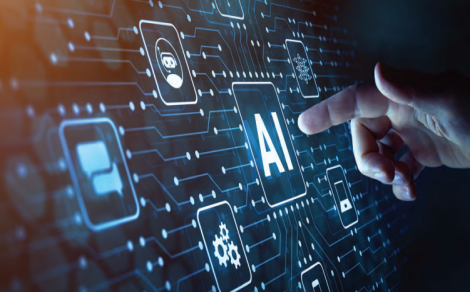AI and the future of electro-pneumatic systems

The increasing integration of artificial intelligence in electro-pneumatic systems is set to play a significant role in shaping the future of British industry. From predictive maintenance to improved precision and energy efficiency, AI is enhancing manufacturing processes. While challenges like cost and skills gaps remain, this shift promises to optimise operations and drive the future of smart pneumatic automation in the UK. H&P reports.
The increasing integration of artificial intelligence in electro-pneumatic systems is set to play a significant role in shaping the future of British industry. While much of the focus in automation has been on robotics and digital transformation, AI-driven pneumatic systems are steadily improving efficiency and precision in manufacturing.
Industries such as automotive, aerospace, and high-value manufacturing have long depended on electro-pneumatic systems for motion control and automation. These systems have traditionally been valued for their reliability, but they often operate with inefficiencies that lead to wasted energy and unnecessary maintenance. AI is changing this by introducing real-time optimisation, allowing pneumatic systems to adjust dynamically rather than relying on rigid, pre-programmed parameters.
One of the biggest advantages of AI-powered electro-pneumatics is its ability to anticipate and prevent failures. Conventional systems rely on scheduled maintenance, which can be costly and inefficient. By continuously analysing sensor data, AI can detect subtle changes in air pressure, component wear, and system performance, enabling predictive maintenance that reduces downtime and extends the lifespan of machinery. This is particularly important as British industry faces increasing pressure to cut waste and improve sustainability.
Beyond reliability, AI is enhancing precision in pneumatic control. Historically, pneumatic systems have been seen as less accurate than their hydraulic or electronic counterparts, but AI-driven algorithms are addressing this by compensating for fluctuations in real-time. However, AI does not completely eliminate the limitations of compressed air control, and its effectiveness depends on integration with well-maintained hardware and advanced flow regulation components. In industries such as medical device production or aerospace engineering, where consistency is critical, AI can provide an extra layer of stability rather than replacing traditional precision methods outright.
AI is also making compressed air usage more efficient. Pneumatic systems are often wasteful, consuming more energy than necessary. AI can monitor demand and adjust supply accordingly, reducing excess air usage and minimising power consumption. That said, AI alone cannot solve all efficiency issues—proper system-wide management, such as reducing leaks and using variable-speed compressors, is still essential. Given rising energy costs and the drive towards net-zero emissions, integrating AI with broader energy-saving measures represents both a financial and environmental benefit for British manufacturers.
Adaptive control
Another development is the shift towards more adaptive control rather than full decentralisation. Traditional electro-pneumatic systems still rely on centralised logic controllers to manage operations, as they provide critical oversight and synchronisation. AI does not replace these systems but instead enhances their capabilities by enabling localised decision-making at specific pneumatic nodes. This improves responsiveness and efficiency while maintaining overall system coordination. Seamless integration with existing automation frameworks is key to realising these benefits without introducing unnecessary complexity.
-
PPMA 2025
23 September, 2025, 9:30 - 25 September, 2025, 16:00
NEC, Birmingham UK -
Advanced Engineering Show 2025
29 October, 2025, 9:00 - 30 October, 2025, 16:00
NEC, Birmingham UK










